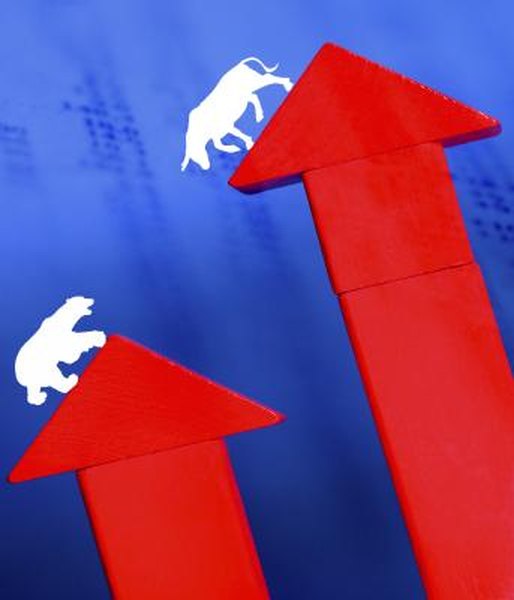Returns Needed to Recover a Stock Market Loss
Recovering from a bear market takes bigger gains than losses.
Dynamic Graphics/Dynamic Graphics Group/Getty Images
When you look at the returns required to get back to even after a stock market loss, the math of percentages highlights the damage a loss can do to your portfolio. The returns needed to recover from a loss get more disheartening with the fact that the market tends to drop quickly and move up slowly. However, the long-term historical results are on your side as the markets have recovered from virtually all of their bear market corrections.
Calculating Percentages
The tip to remember when calculating return percentages is that the calculation always goes from the starting point to the ending point, with the starting value as the base. For example, an investment is worth $100. If it goes up 10 percent it will be worth $110. A drop of 10 percent puts the investment at $90. The 10 percent is based on the $100 start. After the 10 percent loss, the new starting point would be $90. Since it takes a $10 gain to get back to $100, 10 divided by 90 shows that, in this case, it would take an 11.1 percent gain to recover from the loss.
Big Losses Hard to Recoup
The math of percentages shows that as losses get larger, the return necessary to recover to break-even increases at a much faster rate. A loss of 10 percent necessitates an 11 percent gain to recover. Increase that loss to 25 percent and it takes a 33 percent gain to get back to break-even. A 50 percent loss requires a 100 percent gain to recover and an 80 percent loss necessitates 500 percent in gains to get back to where the investment value started.
Effects of Compounding
Investors who get hit by a bear market need to be aware that it will take a while to recover, but the math of compounding returns will help the cause. Consider a bear market with a 30 percent drop in value, down to 70 percent of what the stock portfolio was worth. A 10 percent gain returns the portfolio to 77 percent. The next 10 percent recovers to 84.7 percent. Two more 10 percent gain years put the portfolio back to 102.5 percent of the value before the drop. So a 30 percent drop necessitates a 42 percent recovery, but 10 percent a year compounded for four years puts the account back into profitable territory.
Control Your Losses
What the math of stock market losses shows best is that investors need to protect themselves against big losses. Mental or broker-based stop-loss orders to sell stocks when a certain loss level is reached will pay off big if the market is moving into bear market territory. Investors sometimes have trouble selling stock they like at a loss, but they will like the stock even better if it can be bought back at a lower price.
References
Writer Bio
Tim Plaehn has been writing financial, investment and trading articles and blogs since 2007. His work has appeared online at Seeking Alpha, Marketwatch.com and various other websites. Plaehn has a bachelor's degree in mathematics from the U.S. Air Force Academy.

